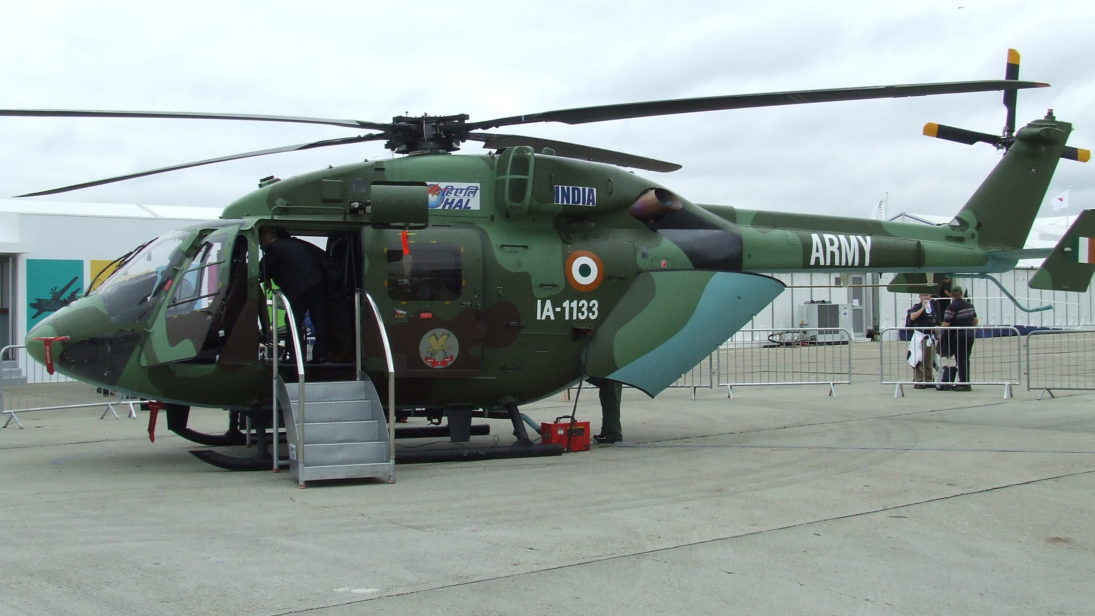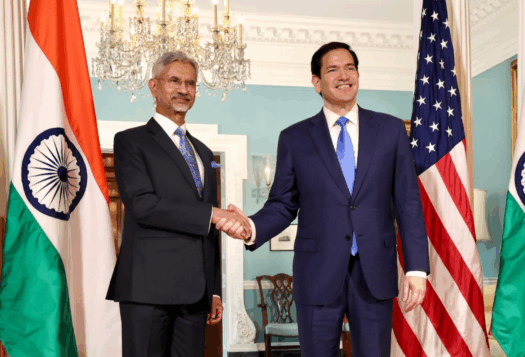
In recent years, changes in the Indian military have made escalatory risks and the nuclear factor loom larger in the event of any military confrontation. These changes are threefold: a shift to integrated battle groups (IBGs) from corps-sized formations, a military pivot away from the Pakistan front and towards China, and under-the-radar nuclear modernization. All these changes lend themselves to fueling escalation between India and its adversaries during a conflict.
The impact of these changes suggest three escalatory steps. The first step on the escalation ladder is the availability and utility of IBGs as of next year (2022), by which time they will be “carved out of existing formations.” IBGs are small, agile units with offensive tasks within both “pivot” (ground-holding) and strike corps that lend themselves to joining battles earlier and can enable a swift transformation of a crisis into a conflict. The second step of escalation involves secondary support for IBGs. As IBGs have a lighter footprint, they may require reinforcement in the face of an adversary’s response, resulting in increased intensity of a conflict, higher levels of force commitment, and possible horizontal escalation at the conventional level. Finally, the third step risks escalation to the nuclear level, made more likely by the preceding conventional escalation.
Considering the heightened potential for escalation that IBGs present, it is also necessary that these changes in military structure be paired with escalatory control measures, such as meaningful dialogue on underlying territorial disputes, between India, Pakistan, and China.
The assumption that using IBGs—instead of strike corps—are a panacea against escalation in a future conflict deserves further interrogation. Corps coordinated battles with IBGs are likely to ultimately result in the same force levels as the earlier strike corps. In effect, the readiness and usability of IBGs makes for a potent brew. Considering the heightened potential for escalation that IBGs present, it is also necessary that these changes in military structure be paired with escalatory control measures, such as meaningful dialogue on underlying territorial disputes, between India, Pakistan, and China.
Escalatory Impulses
While IBGs were initially envisioned for India’s western-front on the Pakistan border, as the threat of salami slicing on the Sino-Indian border comes to the fore in India’s defense planning, IBGs are now being operationalized on both fronts. While their development on their own does not provoke nuclear thresholds, the employment of IBGs is likely to foreshadow greater escalation, both vertical and horizontal, that in turn brings the nuclear equation into play.
Against Pakistan
For Pakistan, India’s shift to IBGs appears in line with the deterrence compulsions of the nuclear age. If Pakistani deterrence messaging on tactical nuclear weapons is to be believed, corps-level operations flirt dangerously with the nuclear threshold—placing achieving reasonable political aims through conventional force at an unnecessary level of risk. Though India conceptualized Cold Start in 2004, military leadership acknowledged that operationalization of the doctrine was still pending as of 2017. Now IBGs will provide Cold Start with teeth, enabling the launch of pivot and strike corps limited offensives. However, in response to terrorist attacks, the presence of ready-to-mobilize IBGs can shorten the fuse between crisis and conflict, enabling India to go beyond the surgical strikes pitched as the dividing line between subconventional and conventional levels. Surgical strikes, which may be aerial or involve a few dozen troops, have not pushed Pakistan down the conventional escalation route so far. However, IBGs—potentially entailing several thousand troops—are decidedly breaching the subconventional-conventional divide, thereby likely to provoke further conventional escalation.
Furthermore, India’s divided attention between China and Pakistan may make Pakistan more capable of responding to IBGs, allowing escalation to occur more quickly. India is slicing up its third strike corps against Pakistan to create an additional mountain strike corps for use against China. The 1 Corps has reportedly been stripped of much of its infantry and some of its armor. Under the circumstance of seeming equivalence—two of Pakistan’s strike corps versus India’s two plus the newly downsized corps—Pakistan may react more successfully to IBG offensives under its “new concept of warfighting” doctrine. Pakistan has reportedly engaged in extensive war gaming and exercises and repositioned its response forces to negate any advantage India seeks from its Cold Start doctrine. Since this preparation may give Pakistan the confidence to take on India’s Cold Start IBG-executed offensives, Pakistan could proceed to do so, generating adverse operational circumstances for the Indian military. A few years on, when India has regained the fighting elements of the strike corps for the plains, it will be back to square one, but with an increased capacity for being quicker off the blocks.
A military setback by Pakistan would have both internal political and reputational costs for India, perhaps pushing it to over-compensate and go beyond the scope of limited offensives by IBGs. Should symmetric conventional escalation tend towards India gaining an upper hand, either through territorial gains or degradation of its military assets, Pakistan could uncover its well-advertised conventional-nuclear “full spectrum deterrence” doctrine, predicated on the strategic effects of tactical nuclear weapons, bringing the nuclear factor into the equation.

Against China
The dynamics of the situation on the India-China front also lend themselves to accelerating the impetus to horizontal escalation, outside of the military contest on the Himalayas. The Himalayan terrain on the border makes IBG-sized forces deployable, maneuverable, and easily switched between theaters of conflict. Since IBGs imply small portions of territory being captured, rather than territorial chunks, escalation may incorrectly be presumed to be manageable.
However, IBGs make military options figure more readily into the menu of political choices. In the fall prior to the Ladakh crisis, the IBGs intended for use in mountains were only used in exercise HimVijay, on the other end of the Line of Actual Control (LAC), in Arunachal Pradesh. A second IBG related exercise was Pakistan-front centric. As a result, the military option in Ladakh was defensive and restricted to “mirror deployment,” though there were also other reasons, such as the onset of the pandemic, that caught India flatfooted and impacted its decision-making on Ladakh.
Although India did not deploy IBGs during the Ladakh crisis, the likelihood of military escalation will be higher next time as IBGs are primed for conflict. The early position by the Indian government that down played the crisis and asserted that there was no intrusion that merited a military reaction in Ladakh will no longer be an option. A political need to “do something” may lead to upping the stakes in Ladakh. India played down the crisis last year, in part because it did not have the force readily available for a military reckoning in Ladakh. In the next crisis, with IBGs on hand, India has the ability to be responsive to domestic political pressures and compensate through military action.
This rising political view is in part due to criticism of India’s failure to exercise a counter-grab option and thereby increase its strength at the post-Ladakh crisis negotiations. China has therefore proved only partially responsive to a negotiated disengagement and de-escalation. Such learning from the crisis may entail greater Indian reliance on IBGs in an offensive role, since IBGs are customized for agility in mountainous terrain. While this capability and intent has deterrence utility—forcing China to think twice before any military adventure—deterrence is never cast-iron. Deterrence has a dark side: actions required to maintain credibility might require suitably positioned and tasked IBGs to launch quick offensives.
In a future crisis, while IBGs of defensive formations would as part of “offensive defense” replicate maneuvers like the Kailash range occupation in August 2020 in real time, India could also deploy offensive IBGs to push into China’s side of the LAC and counter-grab the Moldo garrison or Rudok. Either proactively or in response, China may capture Daulat Beg Oldie—India’s well-known Achilles heel—clinching its advantage in the Depsang area. The localized border war may expand under compulsion from a nexus of military factors and nationalism to include air raids and missile exchanges against other regions in both countries. In an adverse circumstance developing on the Himalayan front, Indian maritime strategies have already mapped out horizontal escalation to the seas near the Malacca Strait.
While the nuclear aspect has historically not played into India-China confrontation in the same ways as India-Pakistan crisis, it is nonetheless a crucial aspect to consider as India’s force options expand. Both India and China commit to No First Use (NFU) of nuclear weapons and have other motivations to not deploy the nuclear option, however the vagaries and uncertainties of conflict may stretch doctrinal commitment.
Preventing Escalation
The likelihood of escalation brought on by IBGs and the increasing focus on China has grim indications. The nuclear factor in an India-Pakistan context is well acknowledged. Pakistan’s possession of tactical nuclear weapons makes this stark, as does India’s shift—discerned by some experts—towards jettisoning NFU. Against China, any public rescinding of NFU in face of tensions on the border, would likely be read as nuclear messaging—adding great uncertainties to conflict dynamics on LAC. By embarking on IBGs India is making its military power usable. However, India would do well to acknowledge the resulting escalatory dimension and take prior precautions.
By embarking on IBGs India is making its military power usable. However, India would do well to acknowledge the resulting escalatory dimension and take prior precautions.
There are already functioning channels of communication with all sides. These channels need to be formalized for escalation control and early conflict termination. India has ongoing military talks and a diplomatic working group with China. With Pakistan, the intelligence channel is already functional, with the recent ceasefire on the Line of Control to show for it. Such conversations, alongside preventative diplomacy, will partially help enable India to overcome escalatory tensions.
Preventive diplomacy is also essential in mitigating escalatory risks. Kashmir continues to be a flashpoint for nuclear escalation between India and Pakistan, India must seek further back-channel negotiations and DGMO talks. This is admittedly easier said than done, but the escalation prospects of military developments suggest that while in the past escalation was avoidable—as the non-availability of IBGs made moving to the first rung of the escalation ladder more difficult— now, with the capability at hand, India is likely to have greater pressure to address the political problem that might give rise to their use.
Against China, India must temper the impossible-to-achieve aim of restoring the status quo ante in Ladakh by countenancing the mutual give-and-take necessary in border negotiations. While there may be some domestic costs of this approach for Indian policymakers, the alternative risks straining limited resources and keeping the border primed for more serious clashes or conflict. Even while military moves, such as strengthening deterrence by denial, are afoot and a strategy of hedging by toting up strategic partnerships, such as the Quad, are underway to strengthen India’s response to salami-slicing on the LAC, India must diplomatically ensure that in a future relationship of “antagonistic cooperation,” cooperation rather than antagonism dominates.
***
Image 1: Chris Abigail via Flickr
Image 2: via Wikimedia Commons


